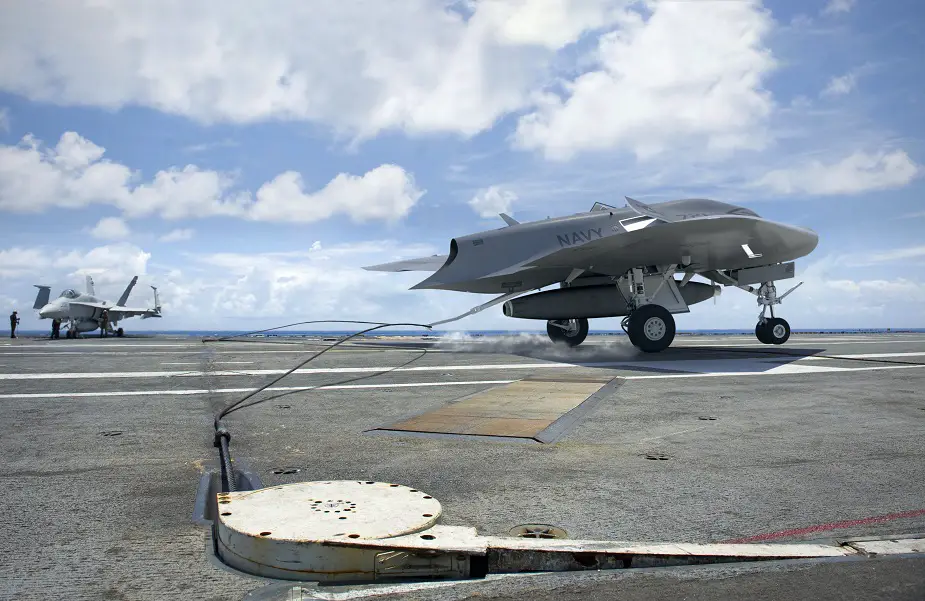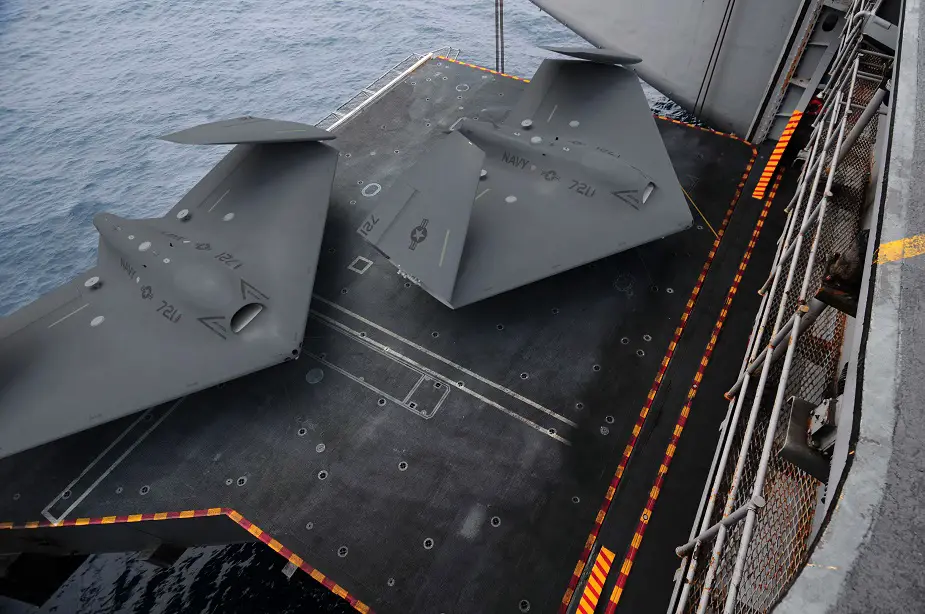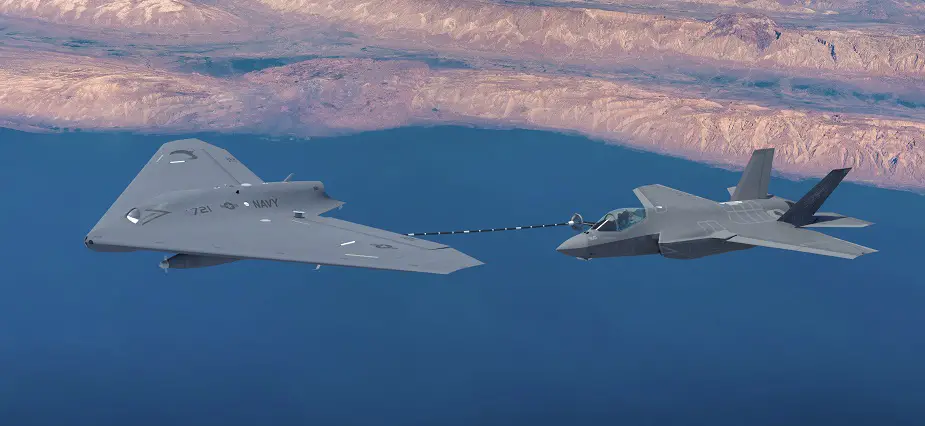Breaking news
SAS 2018: Lockheed Martin Showcasing its MQ-25 Tanker Drone.
At the Navy League’s Sea-Air-Space 2018 exposition currently held near Washington D.C., Lockheed Martin is showcasing for the first time the design of its MQ-25 proposal.
 MQ-25 scale model on Lockheed Martin's booth at Sea Air Space 2018
MQ-25 scale model on Lockheed Martin's booth at Sea Air Space 2018
The U.S. Navy MQ-25 program calls for robust unmanned refueling capabilities that will extend the combat range of deployed Boeing F/A-18 Super Hornet, Boeing EA-18G Growler, and Lockheed Martin F-35C fighters. The Navy's goal for the aircraft is to be able to deliver 15,000 lb (6,800 kg) of fuel total to 4 to 6 airplanes at a range of 500 nmi (580 mi; 930 km).
 Lockheed's MQ-25 is fitted with the F-35C's landing gear. Lockheed Martin picture.
Lockheed's MQ-25 is fitted with the F-35C's landing gear. Lockheed Martin picture.
At Sea Air Space 2018, company representatives insisted on their "purpose built / clean sheet" design. According to Lockheed Martin, the flying wing design provides better characteristics for the carrier tanking role. For example, the design creates less wake disturbtions compared to designs featuring vertical and/or horizontal stabilizers.
 The MQ-25's wings can be folded to lower its footprint on deck. Lockheed Martin picture.
The MQ-25's wings can be folded to lower its footprint on deck. Lockheed Martin picture.
Lockheed Martin's MQ-25 design features many components already proven at sea, aboard aircraft carriers: Among them are the Super Hornet's GE F404 turbofan engine and the F-35C's landing gear.
Another key advantage of their design according to Lockheed Martin is the fact that their MQ-25 proposal comes fitted with the Joint Precision Approach and Landing System (JPALS). It is an all-weather landing system based on differential GPS for land-based and sea-based aircraft.
With a cruise speed of Mach 0.7, Lockheed Martin's MQ-25 can keep up with the strike force support long range stike missions in contested environments.
 An MQ-25 refueling an F-35C. Lockheed Martin picture.
An MQ-25 refueling an F-35C. Lockheed Martin picture.
Lockheed Martin says that rather than repurposing an aircraft design originally focused on a different mission, their purpose-built MQ-25 is optimized for probe and drogue tanking performance and carrier integration to meet the Navy’s critical refueling needs while also providing opportunity for capability growth. Their experience extends from the KC-130J, S-3, open mission systems, and their recent carrier integration and maritime aircraft experience including the F-35B, F-35C and CH-53.

























